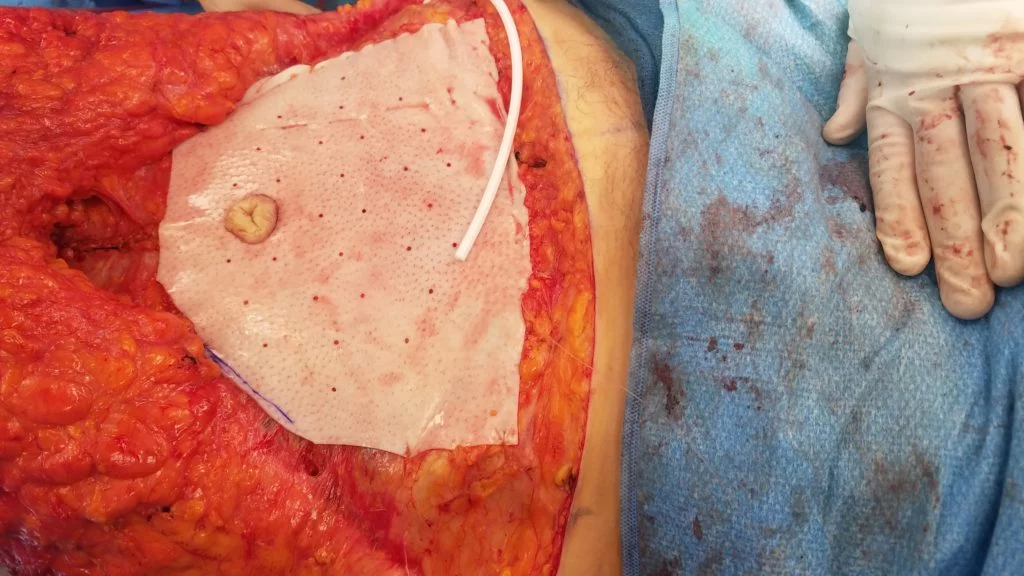A hernia is defined as an organ protruding thru weakness of the normal structures containing it. In the case of tummy tucks, it is typically the protrusion of the omentum or small bowel thru a weakness in the midline diastases. Hernias can be repaired during the tummy tuck procedure, and fixes the diastases so that future recurrent hernias are less common.
The procedure is very similar to a regular tummy tuck, until the surgeon approaches the hernia, where the dissection slows down. The hernia is carefully identified and the contents are separated from the fascia so they can “drop back down”. Sometimes a hernia sac/fat is resected to facilitate that. As compared to a regular tummy tuck, a tummy tuck with hernia repair of the umbilicus increases the slight chance of having belly button healing issues due to compromise of the flood flow to the belly button. Therefore, Dr. Khalifeh adjusts his procedure to leave a cuff of tissue (fat and vessels) to nourish the belly button in the side away from the hernia whenever possible. This then ensures better healing. Of course, there are small risks associated with hernia repairs since the internal organs are also more exposed, but carefull dissection makes this a safe surgery.


